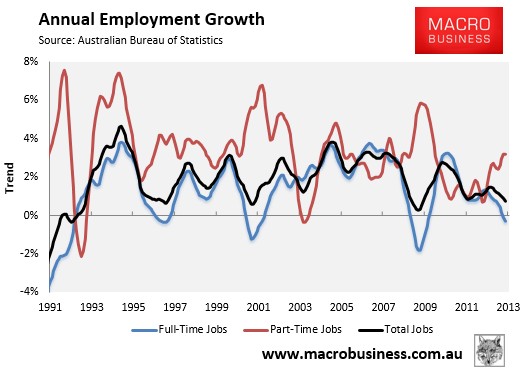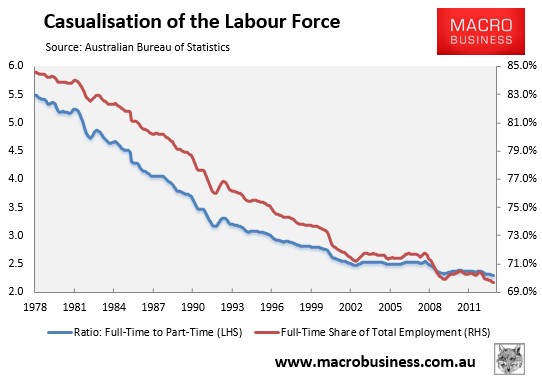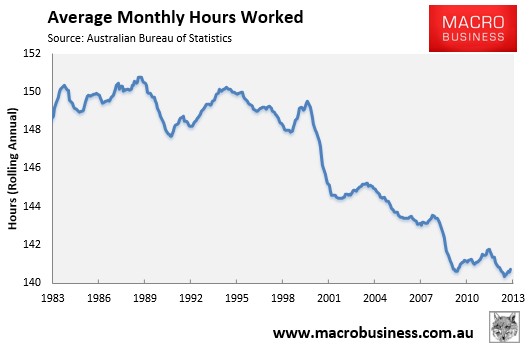
Possibly the most interesting aspect of yesterday’s labour force release by the ABS was the ongoing contraction in full-time jobs, which declined by 0.3% in the year to October in trend terms, offset by a 3.2% rise in part-time jobs (see next chart).

While the casualisation of Australia’s workforce is nothing new – it has been an ongoing trend globally as more women have entered the workforce and the economy has shifted towards services (thanks in part to globalisation) – the trend has quickened recently, with the ratio of full-time to part-time work and the full-time share of total employment falling to a record low in October 2013 (see next chart).

The trend towards casualisation is also reflected in average monthly hours worked, which have fallen sharply since 2009, although they have recovered slightly over recent months as the aggregate number of hours worked has increased (see next chart).

The casualisation of Australia’s workforce is not a concern if it is being driven by choice. Many employees may not wish to be employed full-time given family or lifestyle reasons. However, to the extent that workers are being underemployed, then it is a sign of broader labour market weakness.
Another plus is that it may be better socially to share time losses than to severely reduce headcount, such as happens in Germany versus the US, certainly it is more equitable.
The ABS’ latest quarterly employment release revealed that the underemployment rate rose to the highest level since February 2002, suggesting that there is significant slack in the labour market and many workers are involuntarily working part-time.
Finally, it is also true that our evolving labour market system is yet to be fully tested under duress. If it is then will the hours reduction approach stand up or the casualisation enable hefty head count reduction?

